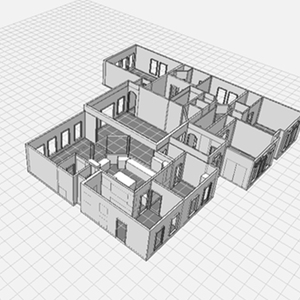Mitered or Butt joint on Butcher Block
Next on my list is installing Hard Maple Butcher Block counter tops….The B/B is 1 1/2″ thick and a standard 25″ width.
The counters are L shaped,…and I really want the inside corner to be a mitered cut…. instead of the butt joint…. I keep seeing on the net.
Does anyone have any experience with this? … specifically, will the mitered joint stay tight over time?
Should I use some kind of bolts to pull the miter tight? (what kind?) Or biscuts?
Looking for ANY advice your willing to share…any pictures?
thanks…paul…



















Replies
Do you have the capacity to make two perfect 45 degree cuts to make a mitre cut? I would assume most use a butt joint (can I say that?) because it's so much easier.
A 36" joint would be tough for me to cut with two perfect edges and a perfect 45 on each piece.
With wood expansion being identical in each piece, a 45 would be the best bet though. Biscuits, countertop connectors, etc. would be fine.
Any wide miter joint in wood will open up; inside upon shrinking, outside upon expansion.
Maple grain is pretty tight, but I would expect it to expand and contract a little with changing humidity. Wood expansion occurs almost entirely across the grain, so the BB will expand its width but not its length. The joint either has to open up or change from 90° to something like 91°. The converse would happen as the wood dries out. It would open a gap on the inside or change the angle to maybe 89°.
You might want to post your question over on Knots. Those guys deal with maple and with fine joinery all the time.
BruceT
Edited 11/20/2008 9:31 pm by brucet9
Bruce is right that the wood will definitely move.
But perhaps, if the countertops are allowed to float a bit (with tabletop fasteners, say) and the miter joints are bombproof (lots of countertop connectors, plenty of glue, etc.), then maybe the shifting will occur with the top shifting out-of square, and the miters holding tight.
But I'm not too wild about difficult-to-achieve finished products. I try to take most of my cues from old, vernacular-design houses. There you'll find lots of FORGIVING details:
Like corner blocks for tall base.
Plinth blocks significantly thicker than the base that butts into them.
Head casings significantly thicker than the side casings that butt into them, or parting beads to give a similar shadow line.
So in kitchens I often like to change heights and materials: Sinks should be mounted in taller tops anyway, since the working level in a sink is 6-8" lower than the counter height. And heat-resistant counters are usually not knife-friendly, etc. So granite by the stove, and butcher block in the prep area makes for very forgiving, offset joints, better longevity, bigger profits, and more sense overall.
We just might be in the process of going back to sensible, modest design, and leaving the era of obscene, two-story entries, overly sterile environments scrubbed daily by third world labor...
But, NAAAHH, what am I thinking?
AitchKay
PS Hey, Bpawb, sorry about the rant. If you ARE doing a miter, use something like a Festo rail-and-saw combo for the cuts, plenty of biscuits or a full-length spline for a good glue-line, plenty of countertop bolts to clamp it up tight, and DON’T use prefabbed tops that have been waxed or pre-finished in any way -- you need clean wood for that glue joint!
I posted this identical question a while back. Got lots of people telling me mitered will work with lots of glue and spline. I haven't installed it yet and am going with a butt joint because the client prefers the look of that rather than a mitre, as do I.
I also still have a hard time believing you could stop it from opening up with seasonal movement, but you see plenty of pictures of them installed with a mitre. Looks a little too manicured for my taste.
Steve
The miter cut is not too tricky, just clamp a straight edge to guide your saw. No way you'll get that cut freehand. Biscuits, countertop bolts and glue will hold it tight. But you will have problems with movement if the counter is secured too tight to the cabinets and/or wall. Better to have oversized holes and use washers when attaching it to the cabinets, and leave it just a little loose for movement.
I'm not sure how to deal with the backsplash or whatever, where it meets the wall.
See my work at TedsCarpentry.com
Buy Cheap Tools! BuildersTools.net